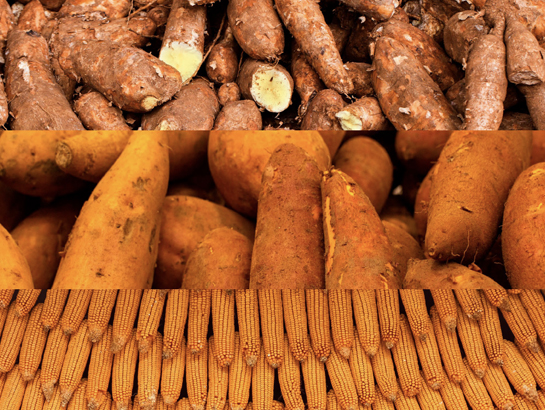The British Standards Institution (BSI) has published a Publicly Available Specificiation (PAS) for vitamin A-enriched grains, completing a set of three PAS that will facilitate trade in biofortified grains on a global scale. Two previously released PAS cover zinc-enriched and iron-enriched grains.
The latest PAS 235 sets standards for the levels of vitamin A in maize, cassava and potato, and is available free of charge from the BSI website. Adoption and application of these standards by food market participants and government regulators will provide assurance for buyers that they are receiving quality biofortified products, increasing market confidence and spurring growth in trade.
The benefits of the PAS will be communicated to market participants to facilitate its use by leading traders in the public and private sectors. One priority objective is to facilitate more public sector purchasing of nutrient-enriched grains, such as through school feeding programs and public distribution systems, as well as more trade by food producers and processors. For food processors, the PAS links to food labeling laws and regulations, making it easier to label foods and make nutrition and/or health claims to consumers.
All three PAS were sponsored by the Commercialization of Biofortified Crops (CBC) Programme, which is a partnership between the Global Alliance for Improved Nutrition (GAIN) and HarvestPlus, funded by the Netherlands Ministry of Foreign Affairs and German Federal Ministry for Economic Cooperation and Development. PAS development was facilitated by BSI Standards Limited and published under license from BSI.
“This is a great moment for biofortification. Lack of standards has often been cited as a major barrier to scaling and commercialization of biofortified, nutrient-enriched grains. Now with this third PAS, we are breaking down that barrier,” said Jenny Walton, Head of Commercialization and Scaling at HarvestPlus.
HarvestPlus is the technical author of the standards. Content for the vitamin A PAS was developed through an international, multidisciplinary steering group comprising representatives from Cato Foods and Esomchi Foundation, both based in Nigeria, Food and Markets Department of the University of Greenwich, GAIN, HarvestPlus, International Institute of Tropical Agriculture, International Maize and Wheat Improvement Center, National Futures Association (NFA), Newcastle University, North Carolina State University, Nutriamaize USA, Tanzania Agriculture Research Institute (TARI), and the World Food Programme (Zambia). The experts on the steering group included nutritionists, agronomists, policymakers, food industry buyers, analytical specialists from academia, the public sector, government, and the food industry.
Vitamin A, in contrast to the minerals zinc and iron, required a more complex standard-setting approach and thus more time for testing. The complexity relates to the conversion process of beta carotene found in the plant to vitamin A and to post-harvest processing losses for vitamin A crops. Victor Taleon, a Research Fellow with HarvestPlus and an expert in the biofortified food technology, ensured that all evidence was gathered and distilled in a user-friendly format; he developed a series of real-world food processing scenarios to highlight the impacts that different food formats and processing methods can have on the vitamin A content.
Work is already underway to put the standards to the test in the market and calibrate them as necessary. For example, early feedback from India indicated that nutrient levels set in the iron PAS for millet may need to be adapted. That said, the PAS represent a milestone for the state of regulatory knowledge about nutrient-enriched crops, compared to when initial work on commercialization received funding from the UK Foreign and Commonwealth Development Office in 2016. Work will also continue to dig into the details of food labeling regulations in all countries where HarvestPlus has programs.
In addition, HarvestPlus is looking into ways to better to facilitate international trade routes for biofortified crops, which may also provide new supply options in the current wheat supply chain crisis precipitated by the Ukraine war. Countries producing zinc-biofortified wheat may be able to offer a better value proposition to supply-constrained foreign buyers, given that zinc wheat is also provides a value-added nutrition component.
Following this third publication, a full review will take place to see where the learnings from PAS development are applicable for other nutrients and technologies. Some countries have automatically adopted the PAS whereas others have requested a simpler “one page” version published in a local language.
The PAS will be successful when procurers of zinc-biofortified wheat, rice, or maize demand products that meet this standard. Having a clear reference point on which to base trade in these products is likely to generate more demand up and down the value chain, and among seed producers, growers, and food manufacturers.
